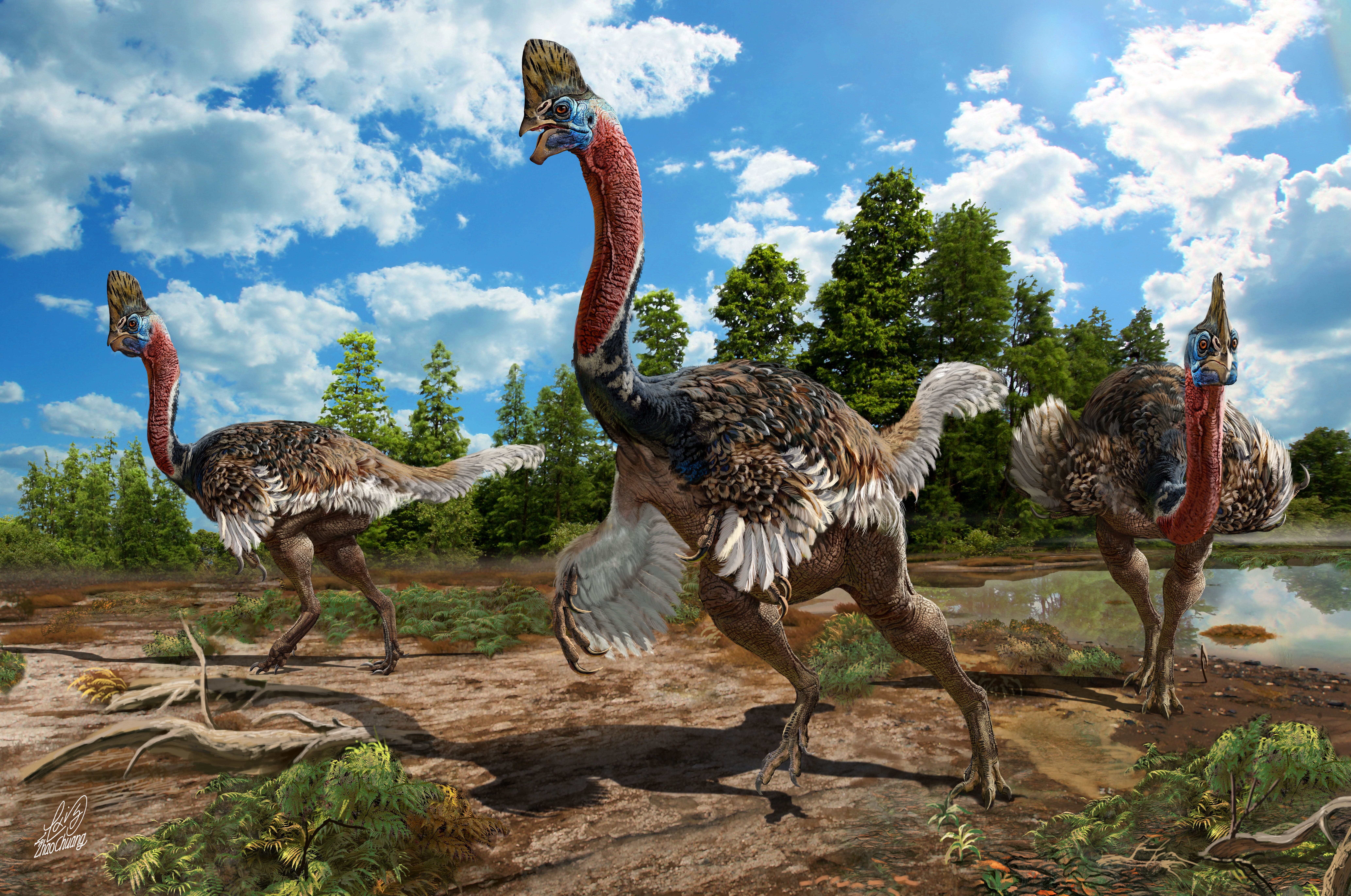"Pterosaurs are well known for their often elaborate crests. The first and perhaps best known of these is the distinctive backward-pointing crest of some Pteranodon species, though a few pterosaurs, such as the tapejarids and Nyctosaurus sported incredibly large crests that often incorporated keratinous or other soft tissue extensions of the bony crest base.
http://en.wikipedia.org/wiki/Crest_%28bird%29
"The crest is a prominent feature exhibited by several bird and dinosaur [and pterosaur] species on their heads. Fleshy crests are called cockscombs; this article discusses feather crests.
Generally used for disp
The crest is made up of semiplume feathers: a long rachis with barbs on either side. These are plumulaceous feathers, meaning that they are soft and bendable. In birds, these semiplumes are common along the head, neck, and upper back, and may be used for buoyancy and sensing vibrations."
https://www.nature.com/articles/s41598-019-38780-8
The cassowary casque meets the characteristics of thermal windows: uninsulated and vascularised. Casques are keratinized, overlying a body crown and network of trabeculae surrounded by dorsoventrally aligned canals containing blood vessels making up an extensive vascular network2,6,9.https://tse1.mm.bing.net/th?id=AMMS_3faf40bb9c89aaa20fef64c0539c2da1&w=236&h=183&c=8&rs=1&o=5&pid=3.1&rm=2
https://en.wikipedia.org/wiki/Anchiornis
This fossil also showed evidence that Anchiornis had a feathered crest on its head, and was used to determine the animal's life coloration.
https://en.wikipedia.org/wiki/Corythoraptor
https://upload.wikimedia.org/wikipedia/commons/thumb/2/29/Casuarius_casuarius_-upper_body_-captive-8a-2c.jpg/170px-Casuarius_casuarius_-upper_body_-captive-8a-2c.jpg
The crest of Corythoraptor [oviraptorid] has been compared to the casques of cassowaries.
Cassowary:
Corythoraptor:
Artistic reconstruction of Corythoraptor jacobsi (Image: Zhao Chuang)


How is it scientifically sound to compare a crest made of feathers, to a crest made of bone. Completely different materials. might as well be comparing the heart to the colon.
ReplyDeleteTake a look at the pictures in the post.
ReplyDeleteDo you see what the author calls the "bony crest base" and what the author calls the "keratinous or other soft tissue extensions"?
The keratinous or other soft tissue extension crest of the pterosaur became the feather crest of the modern bird. (Just as the complex fibres of the pterosaur wing membrane became the feathers of the modern bird wing.)